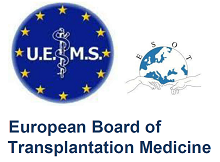Dado que las alteraciones de los conductos biliares en la fibrosis quística remedan a las de la colangitis esclerosante primaria (CEP), la colangiorresonancia magnética (CRM) podría ser de utilidad diagnóstica, sobre todo teniendo en cuenta su carácter no invasivo.
Material Y MétodosSe han estudiado prospectivamente 26 pacientes adultos con fibrosis quística, 11 con hepatopatía previamente diagnosticada mediante la clínica, exploración física, pruebas de función hepática y ecografía abdominal (grupo A) y 15 sin hepatopatía aparente (grupo B). A todos se efectuaron pruebas de función hepática, ecografía abdominal y CRM en equipos de 1,5 Teslas General Electric y Siemens. Las imágenes de la CRM fueron interpretadas a ciegas por dos radiólogos con experiencia en interpretación de las alteraciones biliares en la fibrosis quística.
ResultadosEn 6 de los 11 pacientes del grupo A, se encuentran signos de cirrosis hepática en la CRM (nodularidad, superficie irregular, esplenomegalia, varicosidades); cuatro de ellos con imágenes arrosariadas en el colédoco y los intrahepáticos; de los otros cinco con hepatopatía previa no cirrótica dos presentan conductos intrahepáti cos arrosariados, dos dilatación de los conductos intrahepáticos, y el quinto hepatosplenomegalia con esteatosis hepática. De los 15 pacientes del grupo B, en cinco se objetivan anomalías de los conductos biliares, correspondiendo en tres a imágenes arrosariadas de los hepáticos y/o del colédoco, en uno a estenosis del hepático común con rigidez de las vías intrahepáticas, y en el otro a irregularidades del calibre de la vía intrahepática sin dilatación con sospecha de litiasis intrahepática.
ConclusionesLa CRM es una técnica útil para el estudio de la enfermedad hepatobiliar en la fibrosis quística, por haber detectado anomalías en todos nuestros pacientes previamente filiados de hepatopatía, y por objetivar lesiones ductulares no apreciables por otras técnicas de imagen no invasivas.
Because alterations in the bile ducts found in cystic fibrosis mimic those found in primary sclerosing cholangitis, magnetic resonance cholangiography (MRC) could be a useful diagnosis technique, especially because it is noninvasive.
Material and MethodsWe prospectively studied 26 adult patients with cystic fibrosis. Of these, 11 had liver disease previously diagnosed on the basis of symptomatology, physical examination, liver function tests and abdominal ultrasound (group A) and 15 had no apparent liver disease (group B). In all patients liver function tests, abdominal ultrasound and MRC using 1.5 Teslas General Electric and Siemens systems were carried out. The images were interpreted blind by two radiologists with experience in the interpretation of biliary alterations in cystic fibrosis.
RestultIn 6 of the 11 patients in group A, MRC showed signs of liver cirrhosis (nodularity, irregular surface, splenomegaly, varicosity); 4 patients showed rose-colored images in the choledoch and intrahepatic ducts; of the 5 patients with previous non-cirrhotic liver disease, 2 showed rose-colored intrahepatic ducts, 2 showed dilatation of the intrahepatic ducts and 1 showed hepatosplenomegaly with hepatic steatosis. Of the 15 patients in group B, bile duct anomalies were found in 5. Of these, 3 showed rose-colored images of the hepatic ducts and/or choledoch, 1 showed stenosis of the common hepatic duct with rigidity of the intrahepatic ducts and 1 showed irregularities in the caliber of the intrahepatic ducts without dilatation, which were suspicious for intrahepatic lithiasis.
ConclusionsMRC is a useful technique in the study of hepatobiliary disease in cystic fibrosis because it detected anomalies in all our patients previously diagnosed with liver disease and revealed ductal lesions not revealed by other non-invasive techniques.







